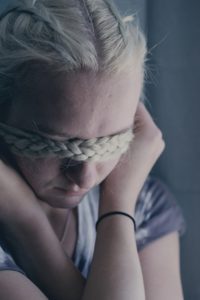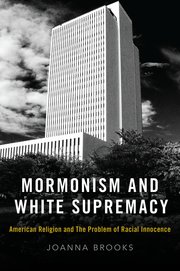In her book Invisible Women: Data Bias in a World Designed for Men, Caroline Criado Perez documents and discusses what she calls gender data gaps. These are places where data that’s gathered from only (or mostly) men are used to make design or policy decisions that have bad effects on women because, on average they differ from men in consistent ways. Although she doesn’t ever gather them in a list like this, I think there are at least three different points at which data from women can be lost.
- Sometimes data isn’t gathered from women at all. For example, a medical researcher might decide that women are too complicated what with menstrual cycles and possible pregnancy, so they study only men and then just assume that the results generalize. Or decision-making bodies that consist of all or mostly men use their personal experience to make policy decisions, without even considering that their experience might not be representative because of their gender. For example, Criado Perez discusses governments making decisions about snow removal and public transportation and even city design with an eye toward trip patterns of commuting to work and back home that is more common among men. In so doing, they ignore or downplay the importance of a pattern more common among women where they go to multiple destinations in one trip. This is especially common among people who care for children or the elderly, which are tasks that women do far more often than men do.
- Sometimes data is gathered for both women and men, but isn’t reported in disaggregated form, so it’s not clear whether there are gender differences or not.
- Sometimes data is gathered for both women and men and is reported disaggregated, but decision-makers are still ultimately unconcerned with the differences. This is generally the case for data on harassment of political office holders that Criado Perez reports, where women holding office are harassed more often and more seriously by their colleagues and even their constituents than men holding office are, but the response of heads of legislative bodies seems to be to tell women to toughen up rather than to do anything themselves to make harassment more difficult.

Photo credit: Sharon McCutcheon on Unsplash
Reading this book got me to thinking about how gender data gaps might affect Church policies. Of course it’s obvious that many Church policies discriminate against women by design, for example the priesthood ban for women. But what the book made me think about is all the ways in which the Church maybe unintentionally makes policies that differentially affect women, and the decision-makers just aren’t very aware of it because they include no women (or if they do, the women know that their place is to not talk too much).
Another thing too is that in terms of the three points at which data on women might be lost that I’ve listed, the Church seems like it’s often stuck at what might be called step zero. That is, Church leaders are loath to admit that they need any data from anyone, men or women, because surely God will put into their minds everything they need to know, and they really don’t want to be troubled by input from rank-and-file members.
But that’s beside the point. What I’m going to do in the rest of this post is just list some Church policies and practices I came up with that are maybe not explicitly designed to give women a worse church experience than men, but end up doing so anyway. These are the types of things that, even without making major changes like ordaining women, could be improved if GAs (and in some cases even local leaders) closed their gender data gaps by getting more input from women.
- The requirement for endowed members to wear temple garments is much more burdensome to women than it is to men. Although they’re roughly the same shape as men’s, women’s garments are less compatible with typical clothing options available to women than men’s are with typical clothing options available to men. And that’s to say nothing of issues like yeast infections, which the cisgender men among the ranks of the GAs aren’t going to be personally familiar with. (For much more on this issue, see Angela C.’s excellent post from several years ago at BCC.) Even if getting more women’s input only meant a softening of language around how consistently garments are to be worn, it seems like this would be an improvement.
- Mothers’ lounges (or whatever the rooms are called in church buildings where women can retreat to breastfeed their children) are consistently too small, too poorly ventilated, too poorly furnished, and too frequently attached to bathrooms. Sometimes they’re non-existent. All this is anecdotal, but it seems like the pattern is so consistent that it clearly reveals a problem. If more women were asked to give input on building design, perhaps this could be fixed.
 Taylor in a meeting that Joseph Smith had always opposed the ordination of black men. Joseph F. Smith disagreed with them in 1879, but by 1908, he had come around to their point of view and reported that Joseph Smith had later declared Abel’s ordination “null and void.” Brooks hypothesizes that Joseph F. Smith’s change of heart might have been related to the recent death of Jane Manning James. She suggests that the presence of prominent black Mormons like James might have actually served as a brake for a while on such editing of recollections. In any case, I was fascinated to read this bit of connecting of dots as to how the Church went from ordaining black men at the beginning to deciding that no, in fact, black people were to be barred from both priesthood and the temple.
Taylor in a meeting that Joseph Smith had always opposed the ordination of black men. Joseph F. Smith disagreed with them in 1879, but by 1908, he had come around to their point of view and reported that Joseph Smith had later declared Abel’s ordination “null and void.” Brooks hypothesizes that Joseph F. Smith’s change of heart might have been related to the recent death of Jane Manning James. She suggests that the presence of prominent black Mormons like James might have actually served as a brake for a while on such editing of recollections. In any case, I was fascinated to read this bit of connecting of dots as to how the Church went from ordaining black men at the beginning to deciding that no, in fact, black people were to be barred from both priesthood and the temple.